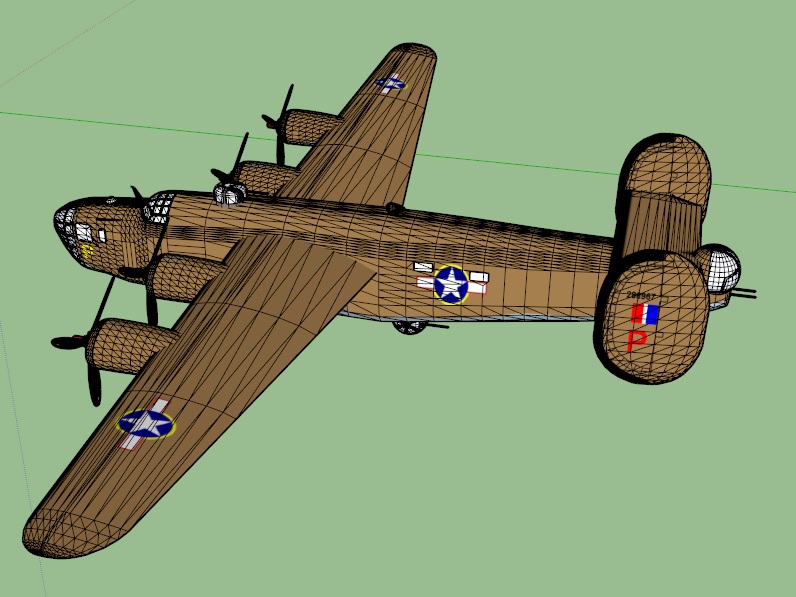 |
|
|
|
|
| 3D Models Slide Show | Image 32 of 60 | Consolidated B-24 Liberator |
 |
||
Consolidated B-24 Liberator The Consolidated B-24 Liberator is an American heavy bomber, designed by Consolidated Aircraft of San Diego, California. It was known within the company as the Model 32, and some initial models were laid down as export models designated as various LB-30s, in the Land Bomber design category. The B-24 was used in World War II by every branch of the American armed forces, as well as by several Allied air forces and navies, attaining a distinguished war record with its operations in the Western European, Pacific, Mediterranean, and China-Burma-India Theaters and in antisubmarine warfare. In comparison to the Boeing B-17 Flying Fortress, the B-24 was a more modern design, with a higher top speed, greater range, and heavier bomb load. However, it was also more difficult to fly in formation at higher altitude because of the design optimizations.[clarification needed] The shoulder placement of the B-24's high aspect ratio wing, made the aircraft vulnerable to battle damage and in water landings. The B-24 was notorious among American aircrews for its tendency to catch fire. Its shoulder-mounted "Davis wing" did not provide a broad surface for emergency landings, therefore an impact on the fuselage tended to crush it and dislodge turrets. Nevertheless, the B-24 provided excellent service in a variety of roles due to its large payload and very long range. Among its varied uses, it was deployed as the carrier for the 1,000 lb Azon guided bomb. There existed an opinion among aircrews and a tendency among some strategic bombardment commanders to favor the B-17's rugged qualities and especially its higher operational ceiling above all other considerations.[4] However, the general staff favored the B-24 and procured it in greater numbers than any other American warplane. The B-24 remains the most produced heavy bomber in history.[citation needed] At nearly 19,000 units, with over 8,000 manufactured by Ford Motor Company, it holds the distinction as the most-produced American military aircraft. The B-24's most costly mission was the low-level strike against the Ploiești oil fields, in Romania on 1 August 1943, The attack became disorganized after a navigational error which alerted the defenders and protracted the bomb run from the initial point. Two B-24s (one B-24A and one Liberator V (Lend Lease B-24J) representing a B-24H) are airworthy as of 2015. CLICK HERE TO DOWNLOAD |
||
| < back | up ^ | next > |